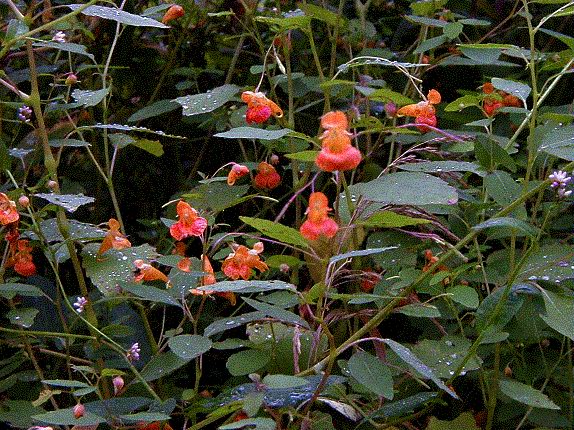|
Common Name:
Spotted Jewelweed, Touch-me-not, Snapweed Scientific Name:
Impatiens capensis Family:
Balsaminaceae Jewelweed is prolific along shaded stream banks and shaded swampy areas. It may be either orange colored (spotted), as shown or pale yellow (called pale jewelweed) and grows in dense bushes about 1 to 2 meters in height. The name jewelweed refers to the way water beads up on the surface of the leaves, like jewels. Potpourri: The name "touch-me-not" refers to the manner in which the jewelweed disperses its seeds. There are small elongated seed capsules containing 3-5 seeds each that burst open at the slightest touch. This disperses the seeds up to 5 feet away, which is very effective at propagating the seeds, particularly if they fall into an adjacent stream. Jewelweed is unusual in that it has two kinds of flowers. The more obvious large flowers are either male or female and must therefore be cross fertilized (pollinated) by an insect or a bee. This is desirable from the standpoint of genetic diversity at the expense of ensuring that the species survives. The jewelweed therefore has smaller secondary (cleistogamous) flowers that are self fertilizing. They look like small green buds. The juice of the jewelweed is effective at reducing the effects of poison ivy if applied soon enough after an exposure. |
